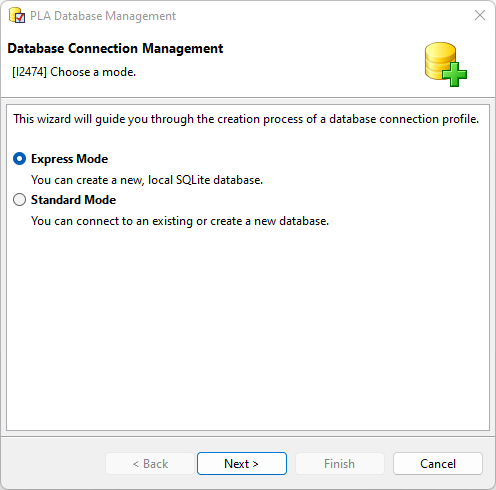Connect PLA 3.0 to a database
You can create a new database and connect PLA 3.0 to it. You can also connect PLA 3.0 to an existing database.
Databases
PLA 3.0 databases store all your data and also hold information such as user accounts, rights and permissions, signatures, and audit trail information. When logging in to PLA 3.0, users connect to a specific database, which sets their work environment for the session. PLA 3.0 supports local databases, databases shared on a local network, and databases used in a client-server scenario, thus allowing you to create databases for single users and multiple users in a shared environment.
Database types
PLA 3.0 supports Microsoft SQL Server and SQLite databases.
-
Use a Microsoft SQL Server databases to manage a medium to a large amount of data that should be simultaneously accessible by multiple users, we recommend using Microsoft SQL Server as the database server.
-
Use an SQLite database if you only have a small amount of data. Create the database for the active user or all users of a computer. To make the database available for a small group of users, you can also place it in a shared folder or on a file server.
An SQLite database consists of a single database file. Copy, move, and backup actions can therefore be performed easily. Simultaneous use and remote access are not intended.
Note: We recommend you regularly create a backup of the database file.
Database connection profiles
Use database connection profiles to connect to PLA 3.0 databases. These profiles hold all properties required to connect to a database such as the path where the database is located, the user name, and the encrypted password to access the database.
Database connection management wizard
The Database connection management wizard opens automatically when you start PLA 3.0 for the first time. It guides you through the steps for creating a database connection profile.

-
Use the Express mode to create an SQLite database. The database is created in your Microsoft Windows home directory and is only accessible by you.
-
Use the Standard mode to create a shareable SQLite database, or a shareable Microsoft SQL Server database that also allows simultaneous use in a multi-user environment.
